Do you want to learn how to buy gold with your 401(k)? In 2025, there’s a growing trend of leveraging the potential of gold investments through a Precious Metals IRA, often referred to as a Gold IRA. This strategy is gaining popularity and has even been adopted by prominent figures like Warren Buffett and Ray Dalio.
This approach becomes especially appealing in today’s unpredictable economy, where investors are actively seeking ways to safeguard their wealth against stock market fluctuations, inflation, and the looming threat of a recession.
By investing in bullion, bars, or coins through a Precious Metals IRA, you can enjoy the advantages of gold investments while simultaneously protecting your wealth. Gold provides a unique feature that traditional 401(k)s lack—ownership of physical metal holdings, serving as a store of value.
To initiate the process of purchasing gold, silver, and other precious metals using funds from your 401(k), you’ll first need to establish a Precious Metals IRA, also known as a Gold IRA. This guide will guide you through the steps involved.
With this in mind, here’s our list of the top 6 gold IRA companies in the industry:
How To Buy Gold With Your 401(k)
Without any further delay, let’s take a look at how to buy gold with your 401(k). For more questions about Gold IRAs in general, you can check out our Gold IRA FAQ below.
401(k) To Gold IRA Rollover
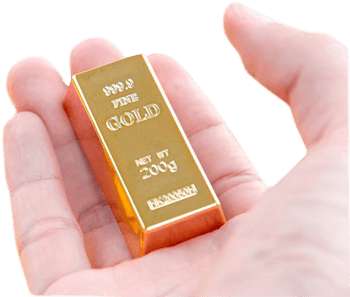
A 401(k) to Gold IRA rollover is a way to secure your financial future. This process involves transferring funds from an existing 401k or traditional account and rolling it over into a self-directed gold IRA, regulated by the IRS.
A 401(k) is an employer-sponsored retirement savings plan that allows you to save and invest for retirement. By electing to have a portion of your paycheck withheld and deposited into your 401(k) account, you can conveniently contribute to your retirement savings.
One of the key benefits of a Gold IRA is the tax advantage. The funds invested in your 401k grow tax-deferred, meaning you don’t incur any tax liability until you withdraw the funds from your account.
By initiating this savvy move, you gain control over the growth of your money. It unlocks wealth preservation opportunities with a proven approach to long-term savings in a tax-deferred account.
A Self-Directed IRA Offers More Flexibility
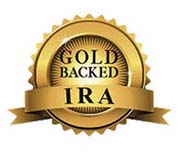 Investing through an employer-sponsored 401(k) plan can sometimes feel restrictive. Investors seeking greater choice and flexibility often opt to move their assets from a 401(k) into a Self-Directed IRA. This transition grants them access to a wider range of investment opportunities that aren’t typically available with a traditional retirement account.
Investing through an employer-sponsored 401(k) plan can sometimes feel restrictive. Investors seeking greater choice and flexibility often opt to move their assets from a 401(k) into a Self-Directed IRA. This transition grants them access to a wider range of investment opportunities that aren’t typically available with a traditional retirement account.
Beyond traditional Wall Street products like stocks, bonds, and mutual funds, there are various financial assets available for investment. This versatility is an advantage over 401k accounts that typically offer limited investment choices.
For instance, Guaranteed Investment Contracts (GICs), commonly the least risky option in standard 401(k)s, may have low interest rates and limited growth or income potential. Therefore, having alternative options is crucial for individuals seeking to achieve short and long-term financial goals.
In contrast to an employer-sponsored 401(k) plan, a Self-Directed IRA can be invested in any of the following assets:
- Gold and other precious metals
- Real estate
- Venture capital and private equity investments
- Joint ventures and other business partnerships
- Raw or farm/ranch land
- Promissory notes
- And more.
(The only notable type of investment excluded from SDIRAs is collectibles).
Direct & Indirect Gold IRA Rollover
When using your 401(k) to purchase gold, there are two types of retirement account rollovers: direct rollover and indirect rollover.
- Direct rollover, trustee to trustee
- Indirect rollover or transfer, trustee to client to trustee
Let’s take a closer look at these two options.
1. Direct Rollover
 Transferring your 401(k) to a Gold IRA through a direct rollover is a straightforward process. Once you’ve established a Gold IRA account, you simply need to get in touch with the administrator or trustee of your current 401(k) account and request that they transfer the funds to the custodian trustee of your new Gold IRA.
Transferring your 401(k) to a Gold IRA through a direct rollover is a straightforward process. Once you’ve established a Gold IRA account, you simply need to get in touch with the administrator or trustee of your current 401(k) account and request that they transfer the funds to the custodian trustee of your new Gold IRA.
Your Gold IRA trustee will provide you with all the necessary information to share with your 401(k) plan administrator, making the fund transfer seamless.
As part of this process, you’ll receive an IRS Form 1099-R, which documents the withdrawal or transfer of funds from your 401(k). In box 7 of the 1099 form, you should see a distribution code of “H.” This specific distribution code signals to the IRS that the transfer is not a taxable event.
Consequently, the standard 20% tax withholding rule does not apply to a direct rollover. No taxes will be withheld or deducted from the funds you intend to roll over into your Gold IRA.
2. Indirect Rollover
An indirect rollover offers a means of seamlessly transferring the funds from your 401(k) into a Gold IRA without incurring taxes and penalties.
In an indirect rollover, your 401(k) plan trustee issues a check to you, equivalent to the amount of your 401(k) funds that you intend to invest in your Gold IRA.
It’s crucial to note that you essentially never possess the money yourself during this process. This option is available for your existing IRA at any time, provided that the assets move from one custodian to another. This means that the distribution check from the old IRA custodian must be made out in the name of the trustee or custodian of the new IRA account that is set to receive the funds. Such transfers can be executed as frequently as you desire.
However, it’s important that within 60 days of receiving an 80% disbursement from your plan administrator, those dollars are securely deposited to the new account – else tax liability could kick in on both yourself and sometimes even larger IRS fees.
Are There Penalties For Moving My IRA Or 401(k)?
No, if done in accordance with IRS requirements, a Gold IRA rollover is a tax-free procedure with no costs or penalties. As long as the money is transferred to a new IRA within 60 days, money taken out of an IRA is not subject to penalties or taxes.
401(k) Rollover Eligibility
While many 401(k) retirement accounts permit IRA rollovers, it’s important to note that the specific requirements and eligibility criteria for rollovers can vary among plans. Therefore, it’s advisable to ensure compliance by reaching out to plan administrators before initiating any actions.
You can simply inform them of your intention to transfer some or all of your 401(k) balance into a Gold IRA, and they will provide guidance on what can and should be done to facilitate the process.
It’s worth mentioning that individuals who are either age 59½ or at least 55 and are no longer employed by their original employer may have special eligibility rules that grant them access to this opportunity without encountering unexpected obstacles.
However, for those under the age of 54 who are still employed by their 401(k) company, executing a standard “in-service withdrawal” without incurring a tax liability can be complex. In such cases, individuals may need to consider options such as leaving the company, waiting until a later point in life, or securing the necessary funds from an alternative source.
Fortunately, there is an alternative approach—many plans allow for “hardship withdrawals” with approval from the administration team. Having this option at your disposal significantly simplifies the process of opening a Gold IRA. Any Gold IRA company included on this list can guide you through the complete process of rolling over your 401(k) into a Gold IRA.
If you’re ready to take action
Opening A Gold IRA Account
Opening a Gold IRA account is simple, but choosing the best company can be challenging. Finding a firm that matches your needs from initial setup through ongoing support is crucial given the large number of financial services that specialize in this unique form of self-directed account.
Before deciding who will oversee your precious metals investments for years to come, do your homework on each company.
Consider items like:
- – Annual costs
- – Minimal investment requirements
- – Potential shipping costs
- – Client education and customer service
Here’s an overview of the gold IRA setup process:
1. Request the Free Gold IRA Guide, which will provide you with valuable information
2. After requesting the guide, you will be contacted by a Precious Metals Specialist who can address your queries and provide further insights
3. If you decide to proceed, you will have a conversation with an IRA Specialist who will inquire about your current retirement account and help determine your eligibility for a rollover or transfer
4. If you are indeed eligible to convert your existing retirement funds into a Gold IRA, you will proceed to establish an account with a custodian experienced in managing self-directed IRAs. Your chosen gold IRA company will guide you in selecting an appropriate custodian
5. Once the necessary paperwork is completed, you can initiate the transfer of funds from your existing retirement account to the new Self-Directed IRA
6. With the funds now within your new Gold IRA, you have the flexibility to purchase the precious metals of your choice
Finally, it’s important to note that your precious metals must be stored at an approved depository. Storing them at home is not permissible, as it contravenes IRS regulations.
Yearly Contribution Limits
With the money transferred from your 401(k) account, you can buy gold and silver to start, and you can add to your investments in precious metals each year after that.
For 2025, total contributions to a precious metals IRA can’t be more than $7,000 and $8,500 if you’re age 50 or older.
Investing in precious metals for your IRA is a straightforward process. Simply send a buy direction letter to your custodian trustee, specifying the metal, source, and price. This enables you to add more gold or silver to your Gold IRA and seize the opportunity for potential gains.
Best Gold IRA Companies Of 2025
To help you identify the best option to protect and grow your wealth today, we have reviewed and rated the top 6 gold IRA companies in the industry.
We have rated each gold IRA company on a variety of factors including BBB/BCA ratings and complaints, customer reviews, annual fees, precious metals selection, storage options, promotions, and buyback programs:
If you’re ready to take action
Gold IRA FAQ
If you feel you have more questions, let’s answer some common questions about Gold IRAs next.
What Is A Precious Metals IRA/Gold IRA?
A Gold IRA, also known as a Precious Metals IRA, is a particular kind of Individual Retirement Account (IRA) that enables individuals to keep actual gold bullion or gold coins, as well as other precious metals, as legally admissible retirement assets.
Why Should You Invest In A Gold IRA?
There are numerous compelling reasons why individuals who have diligently saved for retirement might contemplate investing in a Gold IRA. Opting for a Gold IRA can introduce diversification into your investment portfolio, effectively reducing your overall risk.
In summary, precious metals, such as gold, can serve to:
- Hedge against a weakening dollar and the impact of inflation.
- Provide protection from the volatility of the stock market.
- Limit exposure to economic uncertainty and financial market instability.
- Mitigate the effects of geopolitical turmoil.
- Shield against negative consequences stemming from economic crises, such as the one triggered by the coronavirus pandemic.
- Contribute to portfolio diversification, enhancing risk management.
- Empower individuals to take private ownership of their financial future.
In times of uncertainty, like the present, it becomes increasingly vital to explore safe-haven investments that not only safeguard but potentially grow your wealth.
The Internal Revenue Service permits certain gold investments to be stored in retirement accounts, which means a Gold IRA may provide tax benefits.
In other words, it enables you to benefit from a straightforward IRS loophole. With the money you’ve previously saved in your retirement account, you are now able to hold actual gold and silver without paying any taxes or penalties.
What Is The Difference Between A 401(k) And An IRA?
A self-directed IRA and a 401(k) vary primarily in that an IRA is typically opened by you as opposed to being provided by an employer.
Does It Matter Who Currently Hosts My 401(k)?
It is important to clarify that the current host of your 401(k) does not significantly impact your ability to pursue a gold investment strategy. Here’s a more detailed explanation:
Former Employer’s 401(k): If your 401(k) is associated with a previous employer, you can still roll over the funds into a self-directed IRA. Once these funds are within your IRA, you have the flexibility to utilize them for purchasing gold, silver, or other precious metals.
Current Employer’s 401(k): Even if you are still employed by the company that administers your 401(k) account, there may still be opportunities to access these funds. Following this access, you can proceed with rolling over the funds into a physical gold investment within a gold-backed IRA.
It’s worth noting that in a gold 401(k) rollover, the funds are disbursed to you, and you subsequently deposit them into the other account. Alternatively, you also have the option to transfer your 401(k) directly to a gold IRA, bypassing the need for the funds to pass through your possession.
Should I Invest In Physical Gold, Futures Options (ETFs), Gold Mining Stocks, Or Gold Funds?
It is significantly riskier to invest in gold indirectly than to buy the actual commodity. You run the danger of losing your investment if you rely on a person or business to manage your wealth for you on the basis of success or failure.
You have control over your riches when you own physical gold. You have that extra layer of security and safety with physical gold that you don’t have with gold exchange traded funds (ETFs), gold mining stocks, or funds.
You can possess physical gold coins or gold bars while still receiving the same tax advantages from an IRA when you invest in a gold IRA. ETFs often have substantial operational costs, which can raise the overall price even when the price of gold declines.
Do My Precious Metals Have To Be Bars Or Can They Be Coins?
It’s important to note that while some coins and precious metals can be included in Precious Metals IRAs, not all are approved by the IRS for such inclusion. Additionally, not all bars or bullion meet IRS criteria for inclusion.
For precious metals to be eligible for inclusion in a retirement account, they must be produced by manufacturers accredited by recognized organizations like NYMEX/COMEX, LME, BMA, NYSE/LIFFE/CBOT, and ISO-9000, or they should originate from a national mint.
The minimum fineness requirements for bullion to qualify for inclusion in a Gold IRA are as follows:
- Gold: .995+
- Silver: .999+
- Platinum: .9995+
- Palladium: .9995+
To ensure compliance with IRS regulations, the IRS maintains a list of acceptable forms of precious metals for IRAs. Reputable Gold IRA companies typically offer a range of metals that adhere to IRS guidelines, giving you confidence in the legitimacy of your precious metal investments within your IRA.
What Precious Metals Can I Invest In?
Gold, silver, platinum, and palladium are the four precious metals that can be invested in a Gold IRA as long as they are pure enough according to IRS standards.
You can mix multiple precious metals in a single account, in other words. An IRA holding any tangible precious metal investments is referred to as a “Gold IRA” in general.
Only a few carefully chosen businesses have the authorization to include particular cryptocurrency assets in IRAs. For IRA investments in cryptocurrencies, we advise BitIRA.
Is A Gold IRA A Safe Investment?
Now let’s ask the reverse: “Will your IRA really be safe without gold?”
A Gold IRA can diversify a retirement portfolio and act as an insurance policy against inflation because gold prices typically move in the opposite direction of paper assets like stocks and bonds.
This reduces risk, particularly in the long run, making it a wise choice for retirement assets like IRAs. For more details, you can visit gold IRA pros and cons or >>>request this FREE Gold IRA Guide.
Is It Expensive To Have A Gold IRA?
No, compared to most retirement plans, gold IRA costs are typically substantially lower. Typically, the annual price is between $150 and $200. That would be less than 1% on an investment of $50,000, for instance.
What Types Of Retirement Accounts Can Be Transferred To A Gold IRA?
You have the flexibility to transfer various types of retirement accounts into a Gold IRA, provided that the account custodian or trustee permits such transfers. Here’s a comprehensive list of transferable retirement accounts:
- Employer-sponsored 401(k)
- Self-directed 401(k)
- Traditional IRA
- Roth IRA
- TSP (Thrift Savings Plan)
- 403(b)
- 457(b)
- SEP IRA
This broad range of transferable retirement accounts allows individuals to explore the option of converting their existing retirement assets into a Gold IRA, should they choose to do so.
If you’re ready to take action


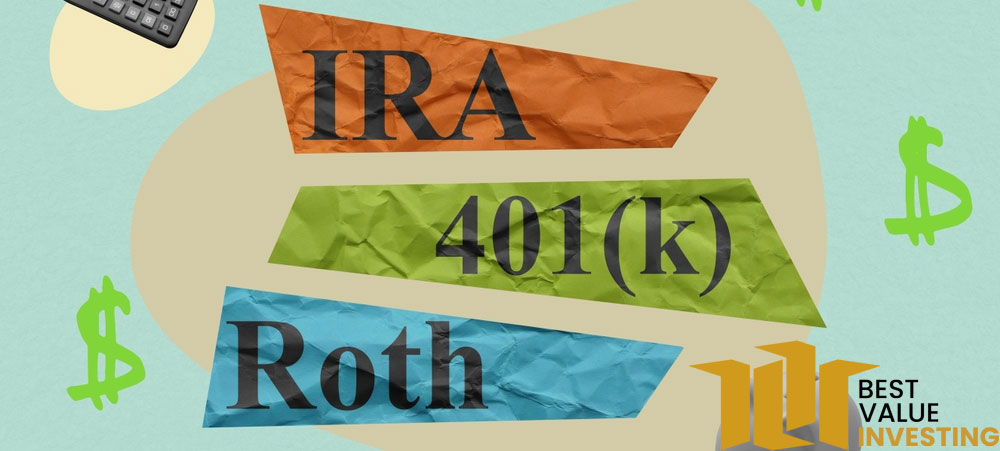

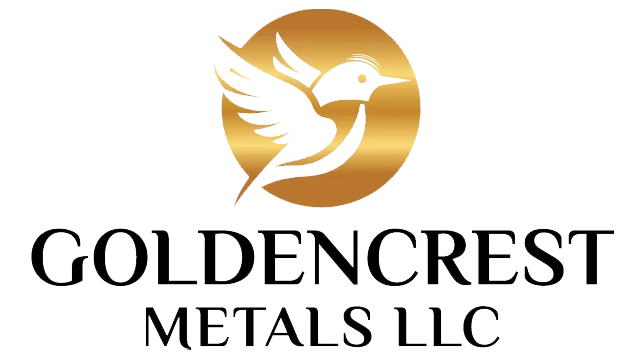






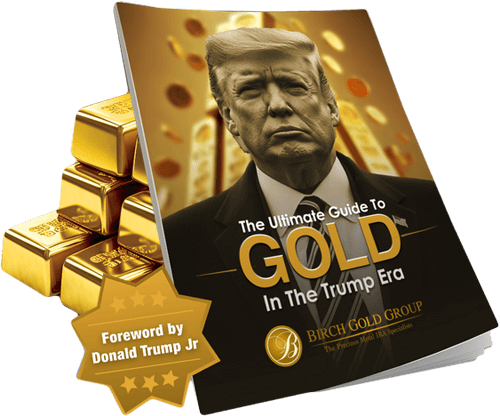


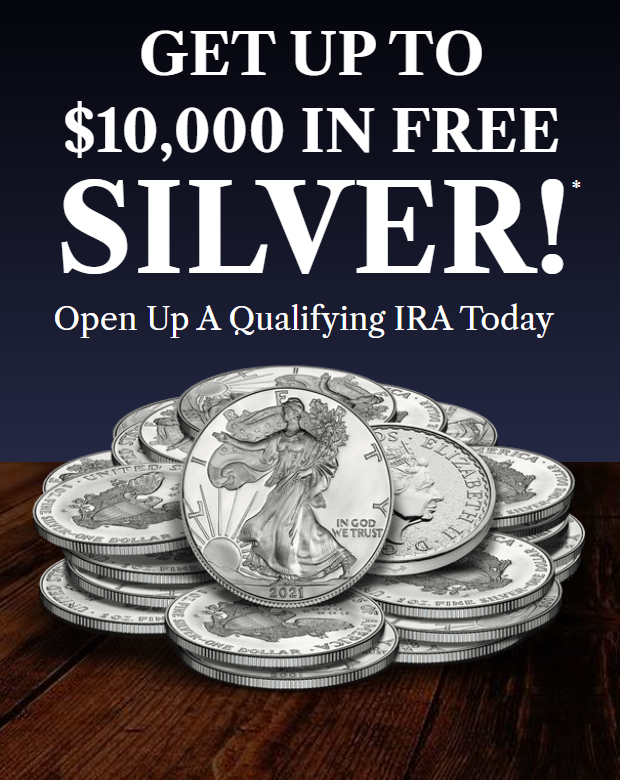





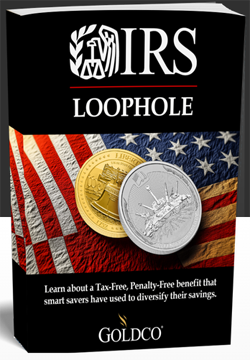


1 thought on “How To Buy Gold With Your 401(k) – Enjoy Tax-Deferred Growth With A Gold IRA!”
This post perfectly captures why so many investors are turning to Self-Directed IRAs. The flexibility to go beyond traditional stocks and bonds opens up a world of opportunity—especially for those interested in retirement portfolio diversification. Being able to invest in assets like real estate, precious metals, or private equity allows for a more personalized and strategic approach to long-term financial planning. It’s empowering to have control over your retirement funds and tailor your investments to match your goals and risk tolerance. Great breakdown of the advantages!